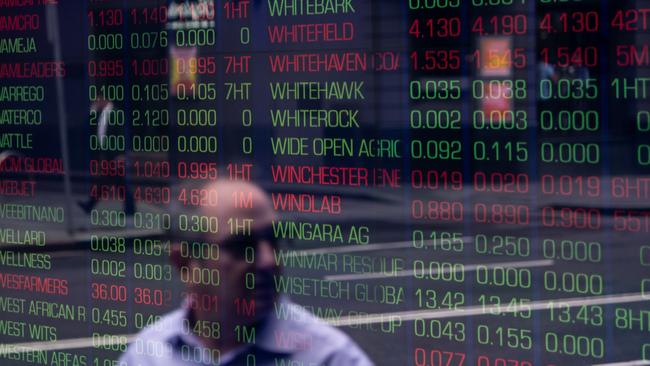Reporting season’s mixed bag of sweet and sour
It started with a bang and ended with a whimper. Roger Montgomery breaks down reporting season sector by sector and highlights some uncomfortable truths.

This year’s reporting season delivered a sobering message for Australian investors, blending flashes of strength with growing concerns about the economic outlook.
As companies shared their results, and the season progressed, it became clear that rising interest costs, deteriorating earnings, and margin pressures were weighing heavily on corporate Australia. The end result? A reporting season that began with optimism but finished on a note of disappointment and caution.
The season began powerfully, with 40 per cent of companies beating consensus expectations by mid August.
Yet, the initial momentum quickly faded. By the time 75 per cent of companies had reported, beats and misses were evenly split at 25 per cent, and the final numbers closed with just 27 per cent of companies beating expectations.
Meanwhile, 26 per cent missed estimates, and the remaining 47 per cent landed in line. Despite these results, a recurring theme was the expansion of price-to-earnings (PE) ratios, driven largely by the tech and communications sectors, which saw multiples expand over sevenfold and threefold, respectively.
However, while tech may have been a bright spot, other areas of the market faltered. Aggregate earnings declined, falling by more than 3 per cent by season’s end, with margins suffering across the board. Analysts noted that the negative earnings revisions were especially pronounced in sectors like healthcare, with companies such as Cochlear and CSL enduring downgrades.
The healthcare sector was another area of concern, as major downgrades hit companies like Cochlear and CSL. Despite strong balance sheets, these companies faced headwinds from rising costs and declining margins.
Healthcare firms, traditionally seen as defensive plays, struggled with cost pressures that eroded earnings and weighed on investor sentiment.
In fact, nearly half of the ASX 200 experienced earnings downgrades, outpacing upgrades by a wide margin and leaving a lukewarm outlook for the year ahead.
It seems the message from domestic companies is consistent with the recently reported slowdown in economic growth.
One of the standout stories mid season was the resilience of the retail sector. But even here, the narrative grew more complicated as time wore on.
Early reports painted a picture of strength, with retail success stories like Breville and JB Hi-Fi outperforming. Yet, by season’s end, a clear divergence emerged within the sector. Companies like Accent Group and Harvey Norman struggled, pointing to a more fragmented consumer landscape. This divide in retail performance has raised questions about the sustainability of consumer spending in the face of persistent cost-of-living pressures.
Indeed, it seems the clear message from retailers was that it is a mistake to believe the consumer sector is holding up. Retail offered arguably the most prominent story of bifurcation. It seems the winners are continuing to take share and reporting solid results but that is at the expense of other retailers.
As inflation continues to be an issue, albeit to a lesser extent than before, many companies highlighted changing consumer behaviours. From Wesfarmers to Woolworths, the focus was squarely on how households are adjusting to tighter budgets.
Meanwhile, travel and leisure stocks, which had initially been buoyed by strong demand for travel, began to see signs of fatigue. Companies like Flight Centre and Qantas reported plateauing demand as deflationary pressures started to emerge in ticket prices. The premium leisure and corporate travel segments, once strong drivers of growth, began to soften, further adding to concerns about the broader economic backdrop.
Elsewhere, the technology and communications sectors were the clear standouts, leading the charge in earnings growth and PE ratio expansion. Tech stocks had a remarkable sevenfold increase in their PE multiples, driven by strong results from companies like Bravura Solutions and WiseTech Global. Communications stocks also benefited from rising earnings, with PE ratios expanding over three times.
On the other hand, the energy sector stood out for its PE contraction. Energy players like APA Group and Origin Energy stressed the ongoing importance of gas in Australia’s energy transition, forecasting a slow and challenging shift toward renewables, contributing to the sector’s underwhelming performance during reporting season.
Industrials and real estate investment trusts (REITs) faced similar pressures. Companies like Aurizon and Qube Holdings experienced significant margin degradation due to inflationary pressures.
The REIT sector, with players such as Charter Hall And Mirvac, also contended with higher interest costs, although the sector managed to avoid the worst of the earnings downgrades. Interestingly, some industrial and office-focused REITs pointed to potential bottoming out, suggesting a possible recovery in the near term.
In the consumer staples sector, companies like Wesfarmers and Woolworths highlighted the impact of inflation and rising household expenses. While these companies demonstrated some resilience, their outlook was clouded by concerns over consumer spending and tighter budgets, particularly as cost-of-living pressures continued to loom large.
Across the board, every sector, with the exception of technology, saw downgrades in EBITDA margins as inflation and higher interest rates took their toll. The August reporting season laid bare the vulnerabilities in Australia’s corporate landscape, underscoring that while certain sectors like tech and communications might continue to outperform, the majority are grappling with significant structural challenges that will likely persist into FY25.
Finally, the housing market is worth some attention. Despite chronic underbuilding and an acknowledged housing shortage, companies such as GWA Group and Reliance Worldwide pointed to a weak outlook for the next 12 to 18 months, with FY25 growth expectations pegged at less than two per cent. And without a surge in commodity prices, Australia appears poised to lag global earnings growth.
Australia’s Financial Year 2024 reporting season may have started with promise, but it concluded with a stark reminder of the challenges ahead. Earnings were hit harder than expected, margins contracted, and almost half the market downgraded earnings, outpacing upgrades. Investors are now left grappling with an environment of rising costs, bifurcated retail performance, and slowing growth prospects. And with PE ratios relatively high, the scene set is a cautious one.
Roger Montgomery is the founder and chair of Montgomery Investment Management




To join the conversation, please log in. Don't have an account? Register
Join the conversation, you are commenting as Logout